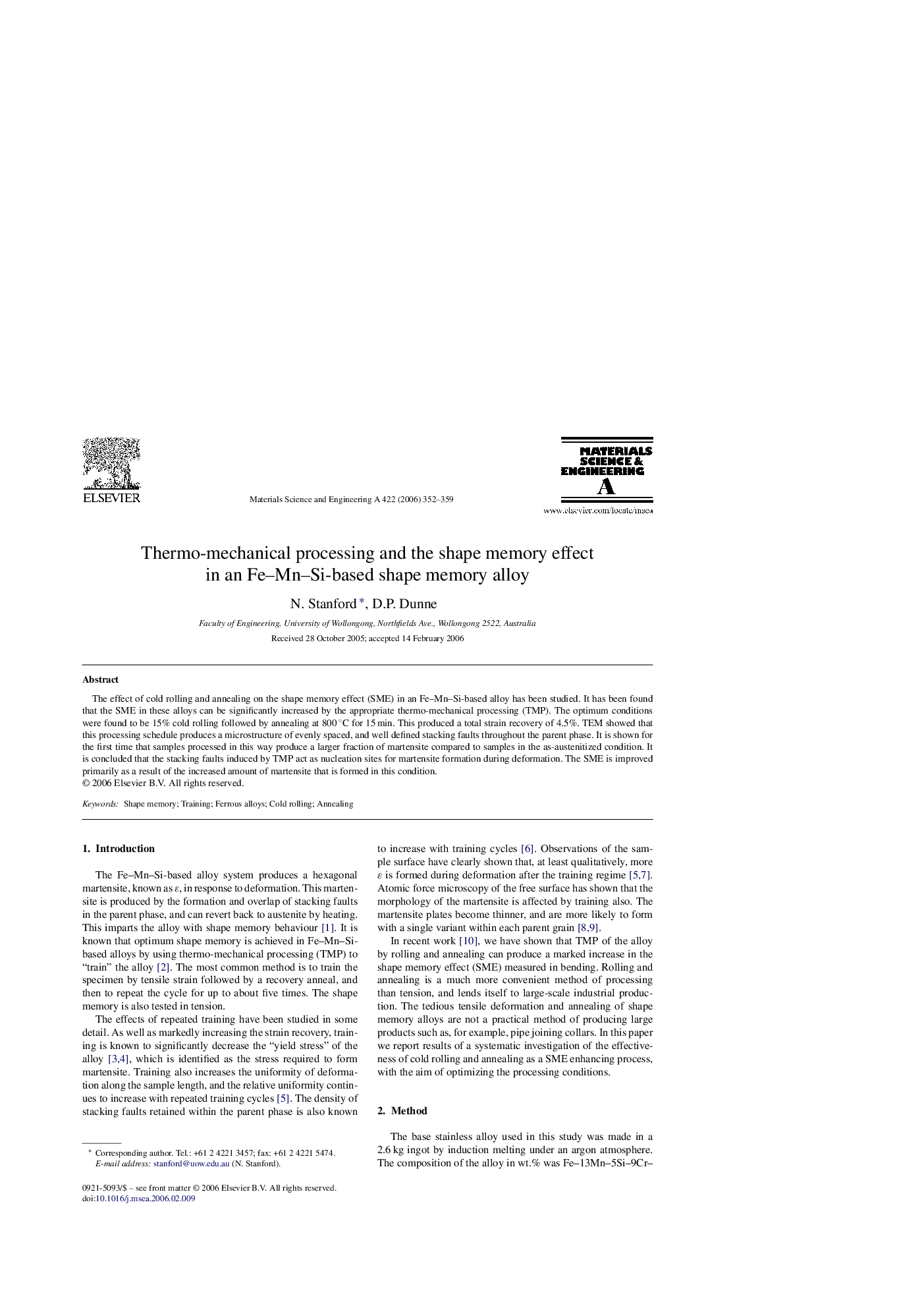| Article ID | Journal | Published Year | Pages | File Type |
|---|---|---|---|---|
| 1585789 | Materials Science and Engineering: A | 2006 | 8 Pages |
The effect of cold rolling and annealing on the shape memory effect (SME) in an Fe–Mn–Si-based alloy has been studied. It has been found that the SME in these alloys can be significantly increased by the appropriate thermo-mechanical processing (TMP). The optimum conditions were found to be 15% cold rolling followed by annealing at 800 °C for 15 min. This produced a total strain recovery of 4.5%. TEM showed that this processing schedule produces a microstructure of evenly spaced, and well defined stacking faults throughout the parent phase. It is shown for the first time that samples processed in this way produce a larger fraction of martensite compared to samples in the as-austenitized condition. It is concluded that the stacking faults induced by TMP act as nucleation sites for martensite formation during deformation. The SME is improved primarily as a result of the increased amount of martensite that is formed in this condition.
